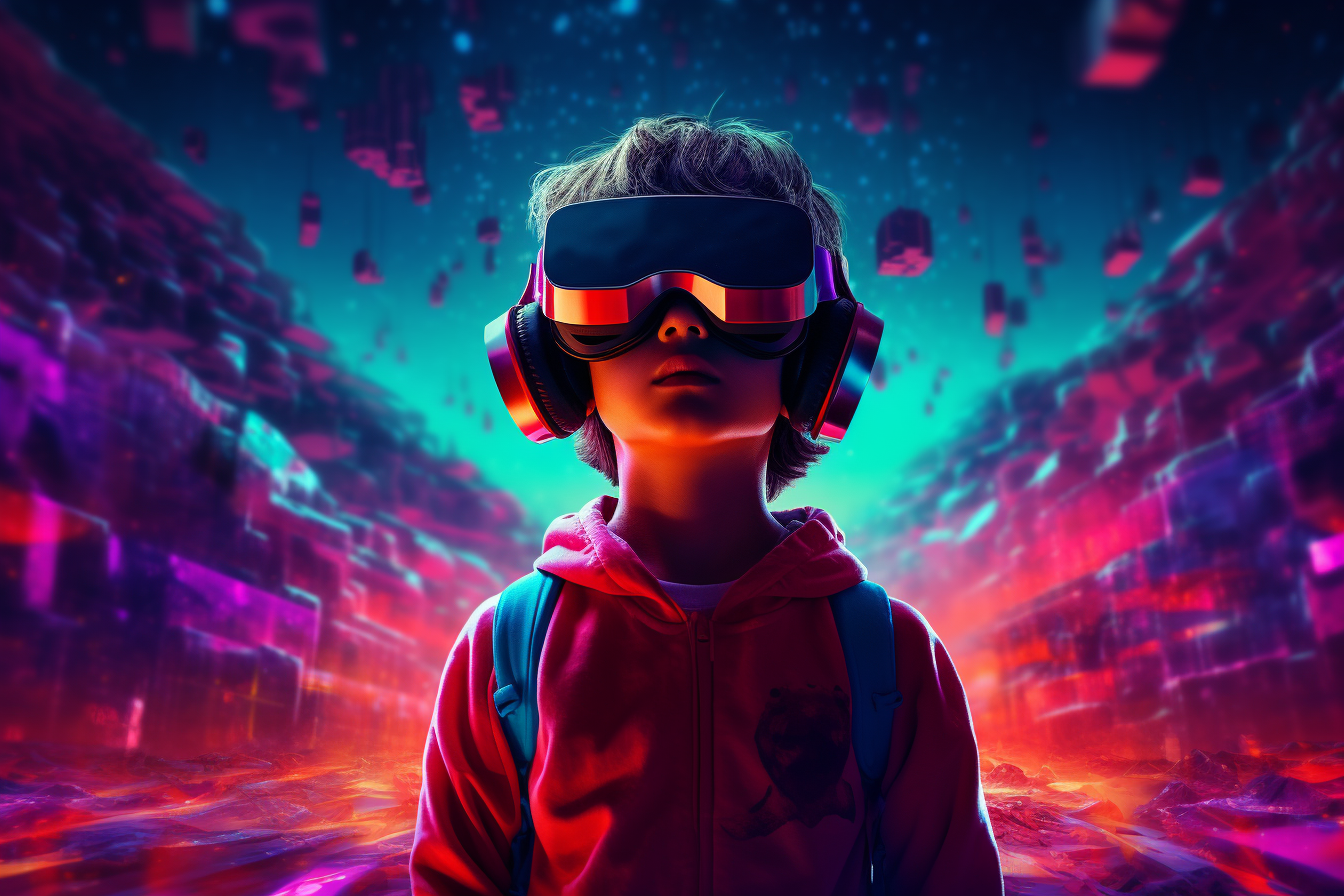He immerses himself in the virtual world of Bedwars in Roblox, spending countless hours strategizing, collaborating with friends, and even investing money in his avatar’s customization.
By Sahra-Josephine Hjorth
Kids and the Metaverse: Gaming as a Gateway
Gaming platforms, such as Roblox, Minecraft, and Fortnite, have become gateways to the Metaverse for young individuals. Through these platforms, children engage in virtual adventures, participate in collaborative gameplay, develop strategic thinking, and even spend money on avatar customization. According to recent data, the revenue generated by in-app purchases and virtual goods in gaming has significantly increased, indicating kids’ substantial financial involvement in the Metaverse. Furthermore learning and gaming will become closely connected and will eventually merge in the digital space. Traditional learning players invest in making their own “educational” games and in gaming companies.
children engage in virtual adventures, participate in collaborative gameplay, develop strategic thinking, and even spend money on avatar customization. According to recent data, the revenue generated by in-app purchases and virtual goods in gaming has significantly increased, indicating kids’ substantial financial involvement in the Metaverse.
The Metaverse is Still in its Infancy
Critics often dismiss the Metaverse as a passing fad, emphasizing its short lifespan of merely three years. However, this perspective fails to consider that revolutionary concepts often take time to mature and gain widespread adoption. The Metaverse is a complex amalgamation of technologies like AR, VR, Blockchain, and AI, which require continuous development and refinement. Judging its potential based on such an early stage is premature.
Critics often dismiss the Metaverse as a passing fad, emphasizing its short lifespan of merely three years. However, this perspective fails to consider that revolutionary concepts often take time to mature and gain widespread adoption.
Diverse Investments from Tech Players
While Business Insider argues that Facebook’s investment in the Metaverse has slowed, it is crucial to consider the broader landscape of tech players and their involvement. While individual companies’ investment strategies may vary, the collective interest and participation from major tech players remain significant. Companies like Microsoft, Google, Amazon, and other innovators continue to explore and invest in the development of the Metaverse, indicating a shared belief in its potential.
Evolving Use Cases and Applications
Critics often highlight the limitations and challenges of current Metaverse implementations, overlooking the evolving use cases and applications that are already shaping various industries. From virtual conferences and immersive learning experiences to virtual marketplaces and social interactions, the Metaverse is expanding its reach and demonstrating its potential to revolutionize how we work, learn, and connect. These diverse applications highlight the versatility and adaptability of the Metaverse. I recently joined the board of an AR/VR & metaverse Medtech called ExpandedExistance and the progress they are making is incredibly impressive. The metaverse implications for the surgical space are incredibly exciting to think about.
I recently joined the board of an AR/VR & metaverse Medtech called ExpandedExistance and the progress they are making is incredibly impressive. The Metaverse implications for the surgical space are incredibly exciting to think about.
Community and User Engagement
One of the key driving forces behind the Metaverse’s growth is the vibrant and engaged community of creators, developers, and users. From indie game developers to artists, entrepreneurs, and content creators, the Metaverse has fostered a collaborative ecosystem where innovation and creativity thrive. This organic growth and community engagement provide a strong foundation for its continued development and adoption.
One of the key driving forces behind the Metaverse’s growth is the vibrant and engaged community of creators, developers, and users. From indie game developers to artists, entrepreneurs, and content creators, the Metaverse has fostered a collaborative ecosystem where innovation and creativity thrive.
Cultural Significance and Societal Impact
Beyond the technical aspects, the Metaverse holds profound cultural and societal implications. It has the potential to transcend geographical boundaries, connect diverse communities, and provide equal opportunities for participation and expression. The Metaverse opens doors to inclusive education, global collaboration, and enhanced social experiences. Its impact on entertainment, art, and commerce is only beginning to unfold. It kinda reminds me of when the Internet first became more widely affordable, and we used to chat with complete strangers with a real hunger to figure out who they were, where they lived, and what they were passionate about.
While critics may prematurely declare the Metaverse as dead, I would argue that a closer examination reveals a vibrant ecosystem of innovation, investment, and evolving use cases. Perhaps most of us adults simply don’t use it that much. But that doesn’t mean its dead. The Metaverse is still in its infancy, and its potential goes beyond mere trends or fads. As technology continues to advance and society embraces new possibilities, the Metaverse will likely play an increasingly significant role in shaping our digital future, especially the digital future our kids will inhabit. Let us not hastily dismiss it but rather embrace its potential and contribute to its development and realization. The Metaverse is alive, evolving, and ready to reshape our world. So at CanopyLAB we are not so hasty to disregard a new technology but will continue to monitor it closely.
Anyways, I have to get going again, because the kids are washing the windows to earn Robux (the virtual coin used in Roblox) and that does require a bit of adult supervision.



